Chandrayaan-3 Successfully Lands Near the Moon’s South Pole

In this article, we’ll delve deeper into the Chandrayaan-3 mission, take a look at the Moon’s south pole region, and consider the recent history and potential future of lunar exploration.
It’s official—the Indian Space Research Organization (ISRO) has made history with their successful launch and landing of Chandrayaan-3 near the Moon’s south pole. The mission has been met with great excitement and admiration worldwide, with the promise of exploring regions previously unseen by any human eye – and even by robotic rovers! This historic achievement marks a significant milestone in India’s space journey and brings us closer to unlocking the mysteries of our nearest celestial neighbour.
The Chandrayaan-3 Mission
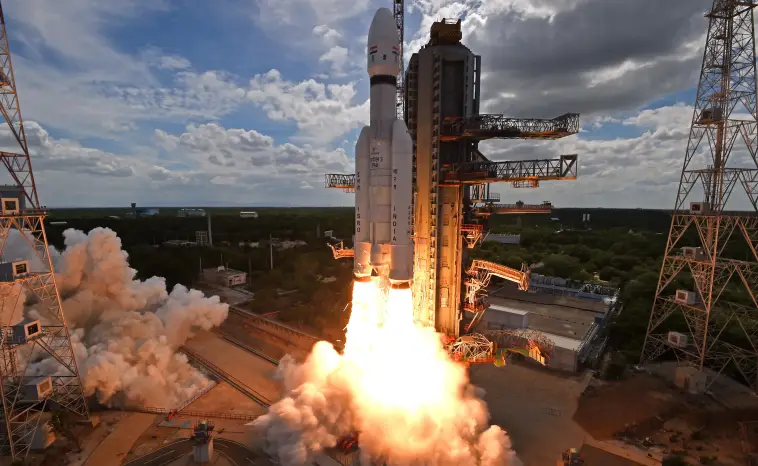
Indian Space Research Organisation (GODL-India), GODL-India, via Wikimedia Commons
Credits: DOS/ISROChandrayaan-3, an ambitious lunar exploration endeavour, was launched on November 14, 2022. This mission is India’s third lunar expedition, following the successful Chandrayaan-1 in 2008 and Chandrayaan-2 in 2019. With the primary objective of landing near the Moon’s captivating south pole, which astronomers speculate contains vast reserves of water and other valuable resources, this mission holds immense scientific potential.
The Chandrayaan-3 mission comprises three integral components meticulously crafted by India’s esteemed space agency, ISRO. Firstly, the lunar orbiter, equipped with cutting-edge technology and advanced instruments, carefully mapped the lunar surface while gathering invaluable data for further analysis. After locating a suitable landing location, the following two components, the Vikram lander and the Pragyan rover, made their way to the lunar surface to begin the mission in earnest. While exploring the intriguing terrain, the rover will extensively study the region’s geology, soil composition, and other fascinating features. This comprehensive exploration aims to unravel the mysteries of the Moon’s south pole and expand our understanding of the celestial body.
With a successful landing and the Pragyan rover roaming the lunar surface, breathtaking high-resolution images and precious data can be transmitted back to Earth. Accordingly, this invaluable information will aid scientists in unravelling the secrets hidden within the Moon’s enigmatic landscape, offering profound insights into our astronomical companion.
The Indian Space Research Organization
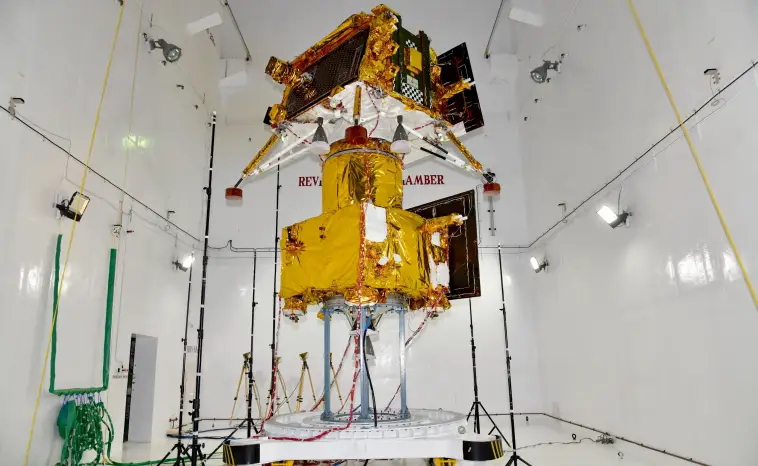
Indian Space Research Organisation (GODL-India), GODL-India, via Wikimedia Commons
Credits: DOS/ISROThe Indian Space Research Organization (ISRO), founded in 1969, is India’s premier space agency responsible for the country’s space exploration program. With a rich history of successful missions, ISRO has achieved several notable milestones that have shaped India’s presence in space exploration. One of its significant achievements was the launch of the country’s first satellite, Aryabhata, in 1975, marking a significant leap forward in India’s space capabilities.
In recent years, ISRO has continued to make remarkable progress. In 2008, it successfully launched Chandrayaan-1, India’s first lunar mission, which played a crucial role in the discovery of water molecules on the moon’s surface. Building upon this success, ISRO embarked on the Chandrayaan-2 mission in 2019, aiming to land a rover on the lunar surface. Although the mission encountered some challenges during the landing phase, it showcased ISRO’s determination and commitment to exploring new frontiers in space.
Beyond lunar exploration, ISRO has also made significant contributions to the field of communication satellites. The space agency has launched numerous communication satellites, enabling India to establish a robust communication network and provide essential services to remote areas. Additionally, ISRO has developed NavIC, a dedicated navigation satellite system that enhances positioning and navigation capabilities within the country.
With its impressive track record and ongoing efforts, ISRO continues to push the boundaries of space exploration, cementing India’s position as a key player in the global space community.
Recent History of Moon Exploration
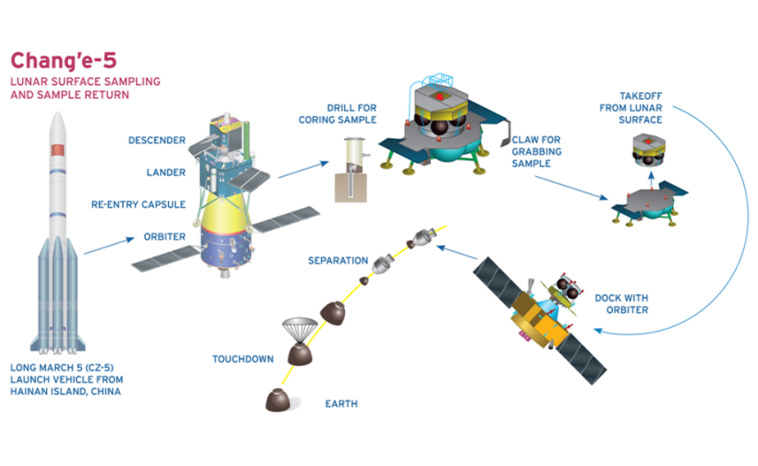
Loren Roberts, CC BY-SA 3.0, via Wikimedia Commons
Loren Roberts, CC BY-SA 3.0, via Wikimedia CommonsThe Moon, Earth’s only natural satellite, has captivated the imaginations of scientists and researchers throughout history. Its mysterious presence in the night sky has spurred countless explorations and scientific endeavours.
One of the most remarkable moments in human history was the Apollo 11 mission, a groundbreaking feat in 1969. This monumental achievement saw Neil Armstrong and Edwin “Buzz” Aldrin become the first humans to set foot on the Moon, forever etching their names in the annals of space exploration.
Since then, NASA and other space agencies have continued to send missions to the Moon, unearthing a treasure trove of knowledge about its geology, composition, and unique features. However, much of the current research focuses on the Moon’s equatorial region, leaving the enigmatic polar regions largely unexplored, shrouded in mystery and waiting to be unveiled.
Our understanding of the Moon deepens with each new mission and discovery, but there is still so much more to learn. The Moon remains an endless source of curiosity and intrigue, beckoning humanity to uncover its secrets and further expand our knowledge of the universe.
The Moon’s South Pole Region
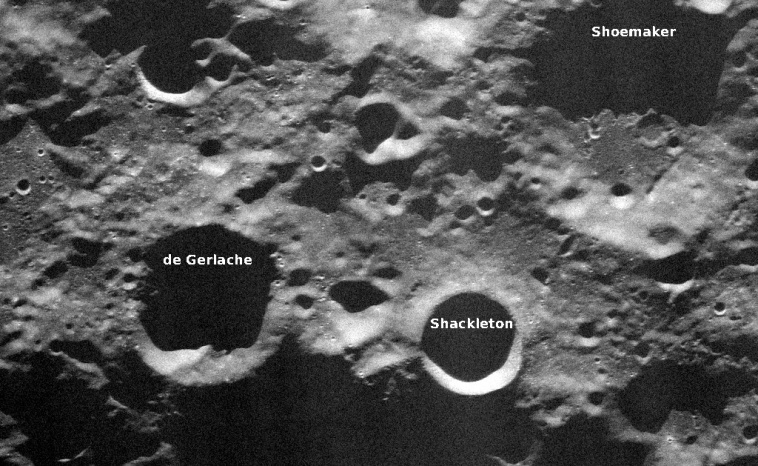
JeanLucMargot, CC BY-SA 3.0, via Wikimedia Commons
JeanLucMargot, CC BY-SA 3.0, via Wikimedia CommonsThe Moon’s south pole region, where the Chandrayaan-3 mission successfully landed, has captured the attention of space agencies and researchers worldwide. The area is particularly intriguing due to significant amounts of water ice, a valuable resource for future lunar missions. Furthermore, the region’s perpetual shadow makes it even more fascinating, as frigid temperatures help preserve any existing water ice deposits.
Beyond its potential as a water resource, the south pole region boasts unique geological features, including craters and mountains. These features hold the promise of unravelling mysteries surrounding the Moon’s formation and evolution. Scientists hope to gain valuable insights and a deeper understanding of our celestial neighbour by studying these geological formations.
Exploring the Moon’s south pole region opens up endless possibilities for scientific discovery and paves the way for future lunar missions. As we continue to unlock the secrets of this enigmatic region, we move one step closer to expanding our knowledge of the universe and our place within it.
Chandrayaan-3 and the Future of Lunar Exploration
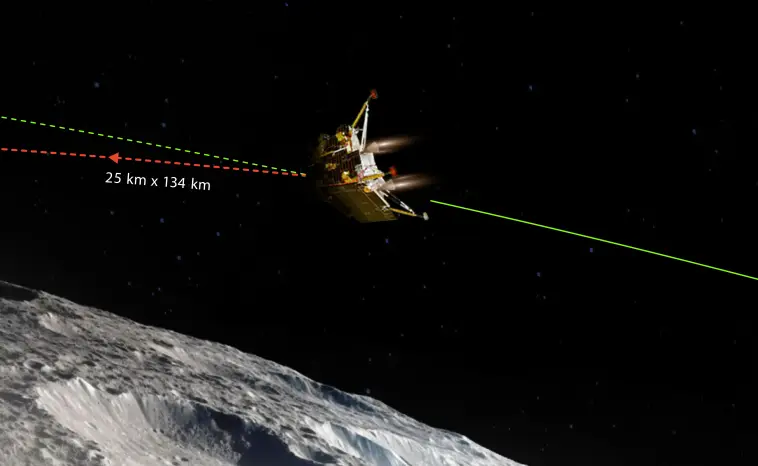
Credits: DOS/ISRO
Credits: DOS/ISROThe successful landing of the Chandrayaan-3 mission near the Moon’s south pole is a significant step forward in the exploration and exploitation of the Moon’s resources. As a result, it opens up new avenues for research, such as studying the Moon’s subsurface, and provides valuable data that scientists can use in future missions.
Several countries and private companies have announced their plans for lunar exploration and exploitation in the coming years. NASA plans to send astronauts back to the Moon under its Artemis program, while companies such as SpaceX and Blue Origin are developing their own lunar mission capabilities. With the increasing interest in the Moon, we can expect more and more missions to be sent to our celestial neighbour in the coming years.
The OSR Gift Pack

The successful landing of the Chandrayaan-3 mission near the Moon’s south pole is a historic achievement that brings pride and inspiration to the entire world. Moreover, it marks a significant milestone in India’s space journey and demonstrates its tremendous technological and space exploration capabilities. As we continue to unlock the mysteries of the Moon and its resources, we can look forward to an exciting future of space exploration and discovery.
While we wait for the Moon to share its mysteries with us, why not take a look at our excellent OSR Gift Pack? With a personalised star certificate, a revolving star chart, a glow-in-the-dark sticker, and an instruction sheet for finding your star, it’s the perfect gift for the stargazer in your life!

